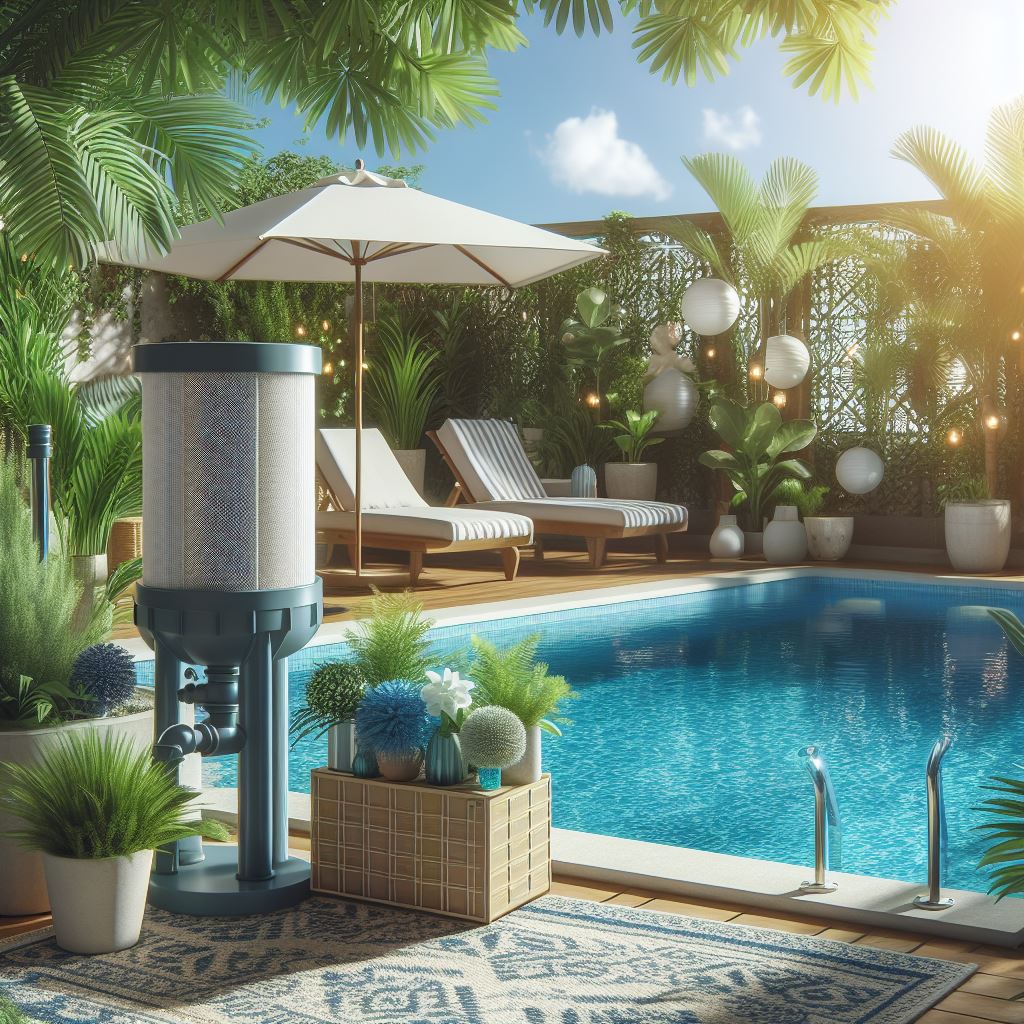Choosing the right size pool filter is crucial for maintaining water quality. Whether you are buying a pool filter for the first time or upgrading existing equipment, selecting the correct size and type can significantly impact filtration efficiency. This article will detail how to calculate pool capacity, determine pump turnover rate, and filter flow rate, helping you choose the right pool filter size.

Calculate Pool Capacity
Calculating the total capacity of your pool is the first step in selecting the appropriate filter. Knowing the total volume of water in your pool helps determine the size of the filter needed. Here are the methods for calculating the capacity of different pool shapes:
Rectangular or Square Pool
Multiply the length, width, and depth of the pool, then multiply the result by 7.5 to get the capacity in gallons.
Round or Circular Pool
Multiply 3.14 by the square of the radius, then multiply by the depth and 7.5 to get the capacity in gallons.
Oval or Rounded Rectangular Pool
Multiply 3.14 by the length, width, and 0.25, then multiply by the depth and 7.5 to get the capacity in gallons.
Kidney-Shaped Pool
Add the widths at the two widest points (A and B), multiply by the length, then by 0.45, and finally by the depth and 7.5 to get the capacity in gallons.
Irregularly Shaped Pool
Multiply the length, width, and depth of the pool, then multiply the result by 5.9 to get the capacity in gallons.
These methods allow you to quickly calculate your pool’s capacity, providing a foundation for selecting the appropriate filter.
Determine Pump Turnover Rate
The pump turnover rate is the time it takes for the pump to completely circulate all the water in the pool. This metric is crucial for choosing the correct pool filter size. Typically, most pumps take about 8-10 hours to complete one cycle, which is the ideal daily operating time for the pump.
Minimum Turnover Rate
Divide the pool capacity by the number of hours to get the turnover rate in gallons per hour.
Gallons per Minute (GPM) Rate
Divide the turnover rate by 60 to get the flow rate in gallons per minute.
Determine Filter Flow Rate
After understanding the pump turnover rate, the next step is to determine the minimum flow rate for the filter. The filter flow rate is the time required to completely circulate all the water in the pool. The pump turnover rate should always be less than the filter flow rate to ensure that the filter can handle the pump’s output and maintain optimal performance. For example, if your pool capacity is 20,000 gallons and the pump turnover rate is 8 hours:
Divide 20,000 by 480 (8 hours times 60 minutes) to get 42 gallons per minute. This means your filter flow rate must be at least 43 gallons per minute.
Choose the Type of Pool Filter
Based on the required flow rate, choosing the appropriate type of pool filter is crucial. There are three main types of pool filters: sand filters, cartridge filters, and diatomaceous earth (DE) filters.
Sand Filters
Sand filters are the most common and affordable type, cleaned by backwashing. Although they do not filter fine debris as effectively as cartridge and DE filters, they are low-maintenance and suitable for most residential pools.
Cartridge Filters
Cartridge filters use large pleated cartridges and require manual cleaning. They offer higher filtration efficiency than sand filters and can capture smaller particles, making them ideal for residential pools.
Diatomaceous Earth (DE) Filters
DE filters are the most effective, using fine fossilized diatoms as the filtration medium to capture the smallest impurities. Cleaning involves backwashing or manually cleaning the grids, making them suitable for pools requiring the highest water quality.
Choosing the Right Size Pool Filter
When choosing the size of the pool filter, the rule of thumb is: bigger is better. Larger filters not only provide better filtration but also prevent damage from overworking due to an oversized pump. Although larger filters may cost more, they offer several benefits:
- Extended time between cleanings or backwashing
- Effective filtration of fine particles
- Extended lifespan of the filtration medium
However, avoid filters that are too large, as insufficient flow rate can impact filtration efficiency.
Adjust Filtration Area and Rate
The National Sanitation Foundation (NSF) sets standards for filtration rates to ensure effective filtration. While commercial pools must adhere to these standards, residential pools can improve filtration efficiency by choosing filters with larger filtration areas.
Purchasing a New Pool Filter
With the knowledge from the above steps, you are ready to choose the perfect pool filter for your pool’s needs. Whether purchasing from a local pool equipment store or online, ensure the filter size and type match your pool’s requirements.
Conclusion
Selecting the right pool filter size is not difficult. With some simple calculations and understanding the pros and cons of different filter types, you can find the best filter for your pool. Keep your pool clean, clear, and healthy, and enjoy the pleasure of swimming.
